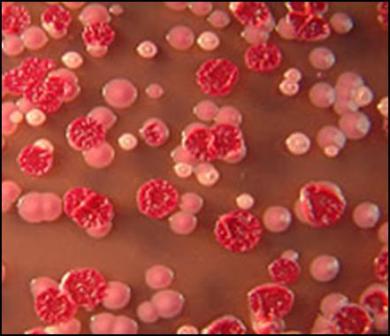Humans have an innate defense system against deadly bacteria. However, the information on how the transition between the genetic level and the anti-bacterial defense was created?

German researcher Joost Wiersinga from the Amsterdam Medical Center discovered a genetic defense mechanism against the deadly bacterium Burkholderia pseudomallei. This research is the next step in the development of a vaccine against this bacterium, capable of being used as a biological warfare agent.
Humans have an innate defense system against deadly bacteria. However, the information on how the transition between the genetic level and the actual antimicrobial defense is created is still missing. Until now, the bacterium B. Pseudomallei, which is suitable for use in biological warfare, has managed to elude medical professionals. This bacteria is able to settle in the body covertly for many years without being detected by our immune system. The bacterium is able to become active suddenly and spread throughout the body, resulting in the patient's death due to blood poisoning.
Doctor Joost Wiersinga and a research team managed to find out what the gene-protein combination is that makes the bacteria harmless. He focused on a family of receptors known as Toll-like receptors (TLRs), a family responsible for initiating the fight against pathogens. Today, there are about ten types of these receptors that are located on the surface of the outer membrane layer of the immune cells, which make up the body's defense system. These receptors function as a kind of alarm system consisting of ten recognition structures. When a bacterium enters the body and is exposed to the immune system, it activates its own unique code. For known pathogens - the mechanism activates an alarm and the immune system and the defense mechanism come into action. However, the bacterium B. pseudomallei tricks the system by activating the code that identifies a harmless bacterium. As a result - the body's defense system remains inactive.
Nevertheless, there are people who are resistant to this bacteria - they get infected with it but the disease does not break out in them. The researcher was able to find the genetic factor responsible for this resistance. He discovered the particular receptor that manages to defend against this bacterium. He did this by growing mice in which the DNA where the gene responsible for the production of the Toll2 receptor was turned on or off. "The group of mice in which the gene for the production of this receptor was paralyzed managed to survive the bacterial infection," says the researcher. "The other receptor we tested, Toll4, had no effect at all - even though for the last decade medical professionals considered it to be extremely significant." The ultimate goal of this research is the development of a vaccine against this deadly bacterium.
The news of the research institute
In the same topic on the science website:

2 תגובות
light:
The last sentence of the article is "The ultimate goal of this research is the development of a vaccine against this deadly bacteria."
Will it be possible to produce a vaccine for the disease following the discovery?